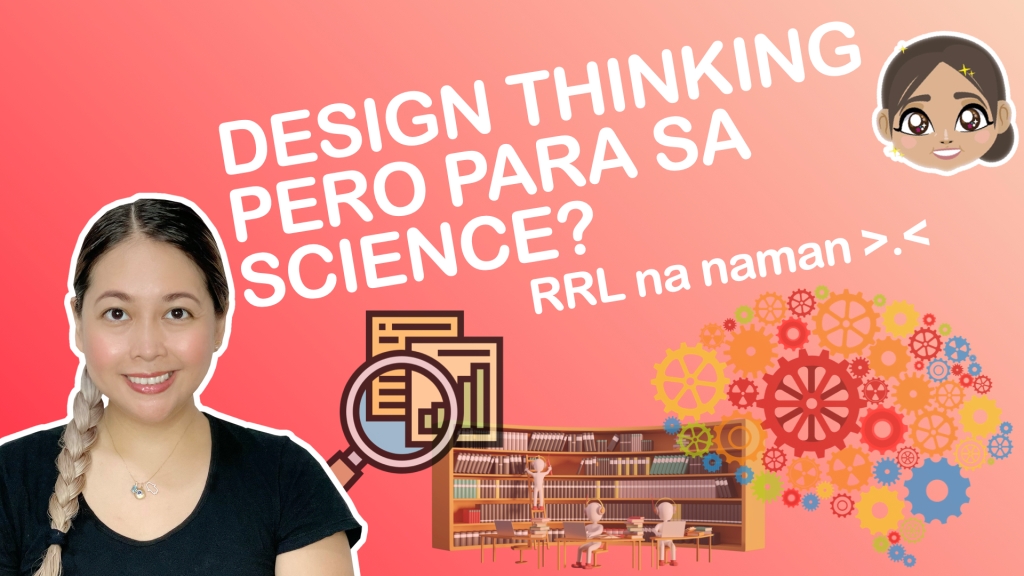Hello Science Fans!
I’m here to drop another research related video — this time on the most divisive part of the research process — the Review of Related Literature or the RRL. But why is the RRL so important?
Imagine you’re building a towering skyscraper. Before you lay the first brick, you need a solid foundation. Similarly, in research, the Review of Related Literature (RRL) acts as this foundational groundwork. It’s like exploring a vast ocean before embarking on a journey—you need to understand the currents, the marine life, and the potential dangers to navigate successfully. The RRL is a thorough examination and analysis of existing knowledge, studies, and theories related to your research topic. It’s akin to studying the blueprints of other buildings before designing your own. Just as a chef tastes different ingredients before creating a new recipe, researchers delve into existing literature to identify gaps, refine their research questions, and understand the context of their study. Essentially, the RRL helps researchers avoid reinventing the wheel and ensures their work contributes meaningfully to the existing body of knowledge.
But another important aspect of the RRL is how it can allow us to proceed with design thinking.
What is design thinking and how can it make scientific research better?
Find out the answer by watching the video or reading the article below:
Before I answer these questions using science, let me first say hi to our new viewers.
My name is Chona and I’m your resident Filipina scientist.
I’m a researcher in the field of molecular ecology, but I’m also the founder of an aquatech startup that creates innovations that help fishers earn more with less.
I’m also a teacher, and we are reinventing education to help promote a culture of life long learning to our students.
And SHE-ensya is my science communication channel where I try to debunk misconceptions about science and make more people interested in STEM.
So, what is design thinking?
Design thinking is a way to solve problems by being creative and understanding what people really need. It’s like building a Lego house: first, you think about who will play with it and what they might want. Then, you come up with lots of different ideas for how to build it. After that, you try out some of those ideas to see which ones work best. Finally, you ask the people playing with the house what they think and make any changes needed to make it better. Design thinking helps us make things that really work for the people who use them.
Design thinking differs from traditional methods of inventing or creating innovations in several key ways.
It emphasizes empathy and understanding the needs of the user or customer right from the start. Unlike traditional approaches that might focus solely on technical feasibility or market demand, design thinking puts people at the center of the process.
It encourages a more iterative and collaborative approach. Instead of aiming for a single perfect solution right away, design thinkers generate multiple ideas and prototypes, testing and refining along the way. This trial-and-error method allows for greater flexibility and creativity.
Design thinking embraces ambiguity and welcomes failure as part of the learning process. Traditional approaches often prioritize certainty and risk avoidance, but design thinkers understand that innovation requires taking calculated risks and learning from mistakes.
Design thinking is highly interdisciplinary, drawing on insights from diverse fields such as STEM, psychology, anthropology, and business. This holistic approach enables a deeper understanding of complex problems and leads to more innovative solutions that consider various perspectives.
But how is the RRL connected to design thinking?
Creating a review of related literature is like exploring a vast library before embarking on a creative journey. It’s akin to wandering through a garden of ideas, gathering inspiration from the flowers of past research and innovation. This exploration not only exposes designers to a wealth of knowledge but also helps them understand the landscape of their design space.
By delving into the literature, designers gain a deeper appreciation for the historical context and evolution of the problem they’re tackling. It’s like studying the geological layers of the earth to understand the formation of a mountain—you uncover the layers of knowledge that have shaped the problem over time.
The review of related literature also acts as a compass, guiding designers to uncharted territories of opportunity and innovation. It’s like charting a course through unexplored waters, where every piece of literature is a beacon illuminating potential paths forward.
And the interdisciplinary nature of the literature review enriches the design process by bringing together insights from diverse fields. It’s like assembling a team of experts from different backgrounds, each contributing their unique knowledge and skills to the project. This interdisciplinary approach sparks creativity and opens up new possibilities for innovative solutions.
But since the RRL is mostly about compiling information from published articles and collated data, it limits an essential aspect of design thinking that would greatly benefit our process of doing STEM research: empathy.
What is empathy and why it is so important?
Empathy is crucial for STEM researchers as it enables them to understand the needs and perspectives of individuals and communities affected by their work, fostering socially responsible research. By empathizing with stakeholders, researchers can collaborate effectively across disciplines, design inclusive technologies, and drive innovation to address societal challenges with compassion and creativity. Ultimately, empathy ensures that scientific and technological advancements benefit humanity by promoting ethical conduct and improving the lives of people worldwide.
How do we integrate empathy in current STEM practice?
One way to do this is by encouraging researchers to step out of the lab and immerse themselves in the communities that they envision as the future beneficiaries of their research outputs.
Imagine researchers as explorers embarking on a journey into unknown territories. Instead of observing from a distance, we need to venture into the heart of the community, engaging with its members to truly understand their needs, challenges, and aspirations. This immersive experience allows researchers to develop a deep sense of empathy by seeing the world through the eyes of those they seek to serve.
Researchers should actively listen to the voices of the community, inviting them to co-create research questions and solutions. Just as a gardener listens to the whispers of the wind and the songs of the birds to tend to their garden, researchers should tune into the wisdom of the community to nurture their research ideas.
Challenging researchers to step out of their comfort zones and interact directly with the people they aim to impact not only cultivates empathy but also ensures that research proposals are grounded in real-world relevance. It’s like tilling the soil before planting seeds—you prepare the ground for growth and nourish the roots of your research with the rich soil of human experience.
Doesn’t it sound exciting to be scientist and researcher? You might want to become part of the wonderful STEM community of the Philippines. If you’re a young woman who’s studying STEM, and you’re about to start your thesis journey, we want to help you out! Please check out the SHE-ensya Thesis Grant where you can receive Php 55,000 to help with your research.
You can check out the procedures to apply for the grant in our previous video, or through this link: https://docs.google.com/document/d/1m1qkSWqIV7NYsqcWTSiPEAlLj0_5hZ_CGvxrVgETTEc/edit?usp=sharing
And also, we still have more than one month to continue fundraising for this grant! Help us help more people by sharing our fundraising links and channels. The information is also available in the description of this video and our social media pages.
Donate to the SHE-ensya Thesis grant through the following channels:
GCash Transfer:
Account name – Chona Camille Abeledo
Account number – 09989701809
BDO Deposit:
Account name – Chona Camille Abeledo
Account number – 004580408899
Airfunding link (for international donors):
But what do you think? Are you convinced of the importance of the review of related literature? Are you excited to try out design thinking in the crafting your thesis or research proposal? Let us know your thoughts in the comments section below.
If you have any comments, questions or suggestions, please don’t hesitate to contact me, your resident Filipina scientist, in the comments section below.
And remember, when in doubt, always use your (con)science!

